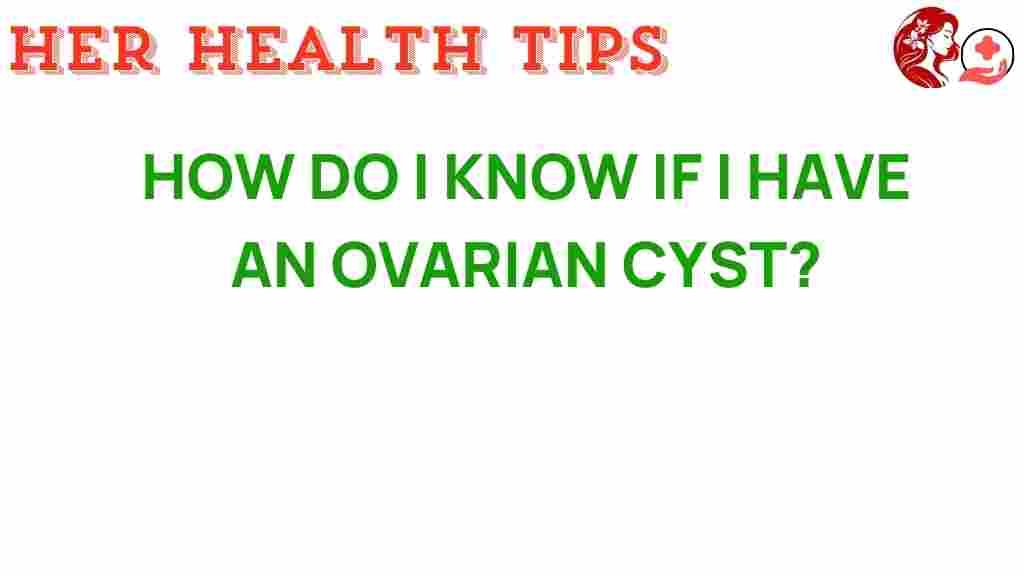Unveiling the Mystery: How to Identify an Ovarian Cyst
Ovarian cysts are fluid-filled sacs that develop on the ovaries, and they are quite common among women of reproductive age. While most ovarian cysts are benign and asymptomatic, understanding how to identify them is vital for maintaining overall women’s health. In this comprehensive guide, we will delve into the symptoms, diagnosis, and treatment options for ovarian cysts, as well as their impact on reproductive health. By raising awareness and understanding the signs, women can take proactive steps toward their health.
Understanding Ovarian Cysts
Ovarian cysts are categorized into different types, including functional cysts and pathological cysts. Functional cysts are a normal part of the menstrual cycle, while pathological cysts may require medical attention.
- Functional Cysts: These include follicular cysts and corpus luteum cysts, which usually resolve on their own.
- Pathological Cysts: These can include dermoid cysts, endometriomas, and cystadenomas, which may require treatment.
Symptoms of Ovarian Cysts
Many women with ovarian cysts may not experience any symptoms. However, when symptoms do occur, they can vary significantly based on the size and type of cyst.
- Pelvic Pain: A common symptom, particularly during menstruation.
- Bloating or Swelling: Women may notice an increase in abdominal girth.
- Changes in Menstrual Cycle: Irregular periods can be a sign of ovarian cysts.
- Difficulty Emptying the Bladder: Larger cysts may press on the bladder, causing urinary issues.
- Sexual Discomfort: Pain during intercourse can occur.
- Weight Gain: Sudden weight changes may indicate a cyst problem.
If you experience severe symptoms such as acute abdominal pain, fever, or vomiting, seek immediate healthcare attention, as these may indicate a ruptured cyst or other complications.
Diagnosis of Ovarian Cysts
Diagnosing ovarian cysts typically involves a combination of a thorough medical history review, physical examination, and imaging tests. Here’s a step-by-step process:
Step 1: Medical History and Physical Exam
Your healthcare provider will ask about your symptoms, menstrual cycle, and family history of ovarian issues. A pelvic exam may also be conducted to check for tenderness or swelling in the ovaries.
Step 2: Imaging Tests
If a cyst is suspected, your doctor may recommend imaging tests, including:
- Ultrasound: This is the most common test for identifying ovarian cysts. An ultrasound uses sound waves to create images of the ovaries and can help determine the size and type of cyst.
- CT Scan or MRI: In certain cases, these imaging techniques may be used for a more detailed view.
Step 3: Blood Tests
Blood tests may be done to check hormone levels and rule out conditions like pregnancy or cancer markers, especially if the cyst appears suspicious.
Treatment Options for Ovarian Cysts
The treatment for ovarian cysts depends on various factors, including the type, size of the cyst, and whether it causes symptoms. Here are common treatment approaches:
Observation
In many cases, especially with functional cysts, no treatment is necessary. Your doctor may recommend periodic ultrasounds to monitor the cyst over a few menstrual cycles.
Medication
Birth Control Pills: Hormonal contraceptives can help regulate the menstrual cycle and prevent the formation of new cysts. This is particularly beneficial for women with recurrent cysts.
Surgery
If a cyst is large, persistent, or causes significant symptoms, surgical intervention may be necessary. The following surgical options are available:
- Laparoscopy: A minimally invasive procedure where small incisions are made to remove the cyst.
- Laparotomy: A more invasive surgery for larger cysts, involving a larger incision.
Always discuss the risks and benefits of surgical options with your healthcare provider.
Awareness and Prevention
Raising awareness about ovarian cysts is crucial for early detection and management. Here are some practical tips to maintain ovarian health:
- Regular Check-ups: Schedule annual gynecological exams to monitor ovarian health.
- Know Your Cycle: Keep track of your menstrual cycle and note any changes to discuss with your doctor.
- Healthy Lifestyle: A balanced diet and regular exercise can contribute to overall reproductive health.
- Stay Informed: Educate yourself about ovarian health and symptoms of cysts.
Troubleshooting Tips
Many women may experience anxiety when dealing with ovarian cysts. Here are some troubleshooting tips to help manage the situation:
- Stay Calm: Remember that most cysts are benign and resolve on their own.
- Communicate with Your Doctor: If you have concerns or questions, do not hesitate to contact your healthcare provider.
- Manage Pain: Over-the-counter pain relievers may help alleviate discomfort.
- Seek Support: Consider joining a women’s health group to share experiences and gain insights.
Conclusion
Understanding how to identify ovarian cysts is essential for maintaining women’s health and reproductive health. By being aware of the symptoms, undergoing proper diagnosis, and exploring treatment options, women can take charge of their health. Regular medical check-ups and open communication with healthcare providers are key to managing ovarian cysts effectively.
If you would like to learn more about ovarian cysts, visit this informative resource. For more details on women’s health issues, check out this external link.
This article is in the category Reproductive and created by HerHealthTips Team
